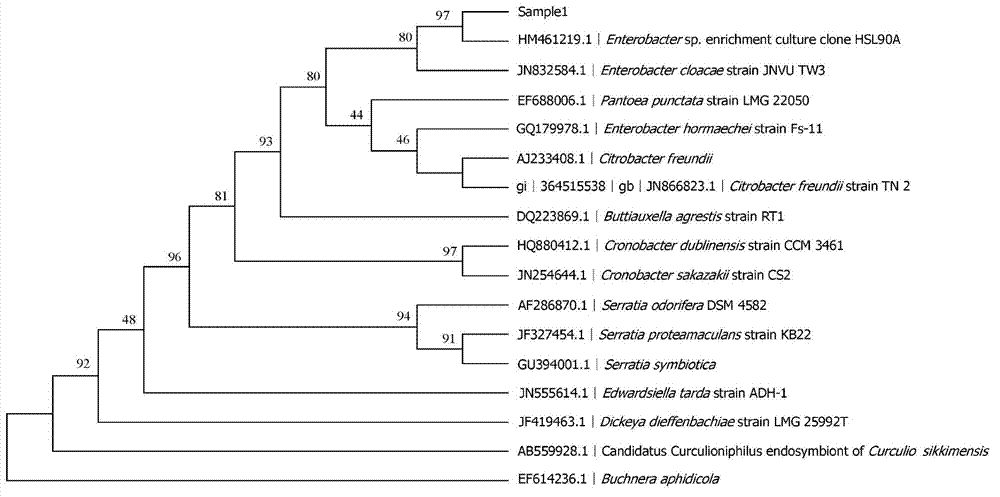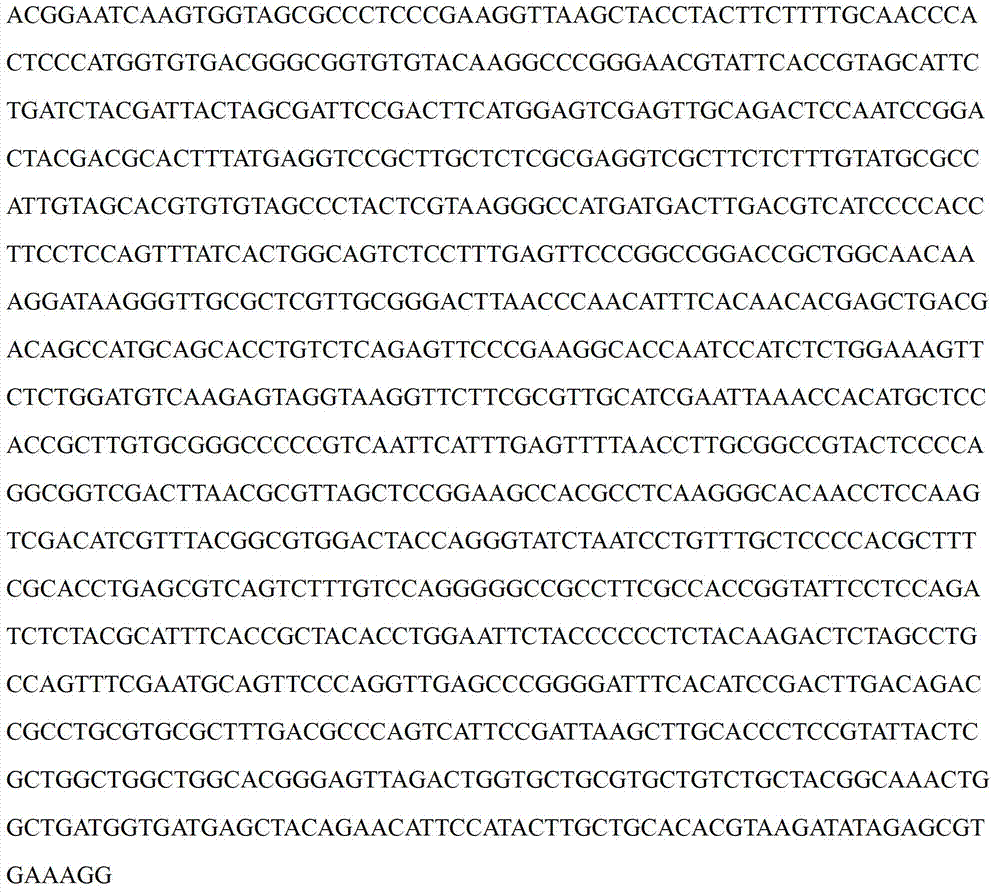2-methyl-4-chlorophenoxyacetic acid weedicide degrading bacterium se08, and screening method and application thereof
A technology of dimethyltetrachlorine herbicide and screening method, which is applied in the field of environmental pollution bioremediation and can solve the problems of few reports on dimethyltetrachlorine microbial degradation
- Summary
- Abstract
- Description
- Claims
- Application Information
AI Technical Summary
Problems solved by technology
Method used
Image
Examples
Embodiment 1
[0027] Isolation, Purification and Identification of Dimethyltetrachloride Herbicide Degrading Bacteria SE08
[0028] 1. Separation and purification of dimethyltetrachloride herbicide-degrading bacteria SE08
[0029] Take 10.0g of the polluted soil sample into the Erlenmeyer flask, add 100mL of inorganic salt culture solution containing 50mg / L dimethyltetrachloride, shake and culture at 30°C and 200rpm for 5 days; take out 10mL of shaking solution and add it to 90mL Inorganic salt culture solution of tetrachloride, continue shaking culture at 30°C and 200rpm for 5 days, and so on, increase the concentration of dimethyltetrachloride to 250, 500, 750, 1000 mg / L respectively, take out 10mL of culture solution and add In 90mL of dimethyltetrachloride inorganic salt culture solution containing gradient increasing concentration, continue shaking culture at 30°C and 200rpm for 5 days; take the culture in 1000mg / L dimethyltetrachloride inorganic salt culture solution and add agar (20g...
Embodiment 2
[0039] Growth and degradation characteristics test of degrading bacteria
[0040] Use high-performance liquid chromatography (HPLC) to analyze and determine the residual amount of dimethyltetrachloride in the inorganic salt culture solution, and the amount of bacterial growth can be determined by measuring the OD of the sample. 600nm to make sure.
[0041] (1) Dimethyl tetrachloride degradation kinetics and bacterial strain SE08 growth curve: 3mL bacterial suspension (OD 600nm ≈0.3) into 100mL inorganic salt culture solution containing 500mg / L dimethyltetrachloride, pH 6.0, cultured at 30°C for 72h, the results are shown in Figure 4 , cultivated for 36h, OD 600nm The maximum value is 0.64. In the later stage, due to the degradation of dimethyltetrachloride, it cannot provide enough carbon source and energy, resulting in the death of the bacteria, OD 600nm decreased, the OD of 72h 600nm is 0.64. With the increase of the number of bacteria, the degradation rate of dimethyl...
PUM
 Login to View More
Login to View More Abstract
Description
Claims
Application Information
 Login to View More
Login to View More - R&D
- Intellectual Property
- Life Sciences
- Materials
- Tech Scout
- Unparalleled Data Quality
- Higher Quality Content
- 60% Fewer Hallucinations
Browse by: Latest US Patents, China's latest patents, Technical Efficacy Thesaurus, Application Domain, Technology Topic, Popular Technical Reports.
© 2025 PatSnap. All rights reserved.Legal|Privacy policy|Modern Slavery Act Transparency Statement|Sitemap|About US| Contact US: help@patsnap.com



